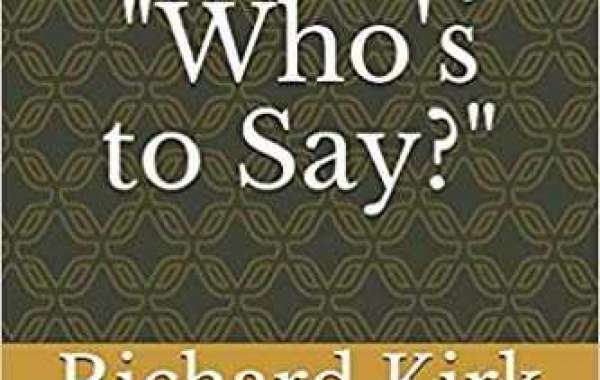Dark Agenda: The War to Destroy Christian America, by David Horowitz, Humanix Books, March 5, 2019 (224 pages, $17.70, Hardcover).
Dark Agenda: The War to Destroy Christian America by David Horowitz
David Horowitz has always been a writer whose work I’ve appreciated since his compelling political biography, Radical Son, which related the author’s break from his communist upbringing after Black Panther associates murdered his bookkeeper friend Betty Van Patter. But brevity and crisp linkage of multiple intellectual threads were never characteristic of Horowitz’s brilliant, often voluminous, exposés of leftist thought and practice. By contrast, Dark Agenda is a concise, chilling book brimming with evidence that links numerous cultural depredations to one overriding theme: The left’s attack on Christian America’s founding in the name of “cultural Marxism.”
“Christian America” is the novel component in Horowitz’s analysis, a term that acknowledges the historical fact that America, at its founding, was 98 percent Protestant. Protestantism, in turn, was intimately linked to the doctrine of “the priesthood of all believers” and to the more broadly Christian idea that all people are created by God. In view of these beliefs and the fact that Protestant groups were living side by side, it followed that in America there would be no institutional or governmental mediator between the individual and God. It also meant that each individual’s rights were endowed solely by their Creator and that freedom of conscience and speech would be hallmarks of the new republic.
“Cultural Marxism,” by contrast, represents the application of its “oppressor versus oppressed” vision of society to various victim groups: blacks, “people of color,” women, native Americans, homosexuals, transsexuals, and any other group claiming victimhood. For Marxists what stands between these oppressed groups and a world in which “social justice” and equality is fully realized are the oppressors, those who supposedly establish the laws and mores that keep them in power. Thus, failure or success isn’t the result of individual choices but the inevitable outcome of a system designed to unfairly help one group (white, Christian, males) and harm the others. Accordingly, what matters politically is destroying the patriarchal Christian system itself with its emphasis on individual moral and economic choices and replacing it with a group-focused system that, in my own words, oppresses the oppressors. Put quite simply, “Christian doctrines were foundational to the American Republic, which the left despises.”
After reading the last two paragraphs, one might think Dark Agenda is highly philosophical and abstract. This impression couldn’t be further from the truth, as these core ideas are given clear expression and development via an array of examples, many of which are doubtless unknown to even the most politically-astute readers. Who knew, for example, that the $621 million U.S. Capitol Visitor Center that opened in 2008 “is less a monument to the nation’s founding and institutions than it is to the antireligious left’s vision for America. When it opened, all references to God and faith had been carefully, deliberately edited out of its photos and historical displays.” For example, the national motto was said to be “E Pluribus Unum” when, in fact, it is “In God We Trust.” Among other historical travesties, a large “image of the Constitution was photoshopped to remove the worlds ‘in the Year of our Lord’ above the signatures of the signers.” Similarly, the “table on which President Lincoln placed his Bible during his second inauguration is on display -- just the table, not the Bible.”
These examples are picayune compared to the spiteful governmental coercion that’s been employed to force The Little Sisters of the Poor, among others, to violate their consciences thanks to Obamacare abortion provisions. The Supreme Court has been the giant secular lever employed by leftists to fundamentally transform “Christian America” into a state hostile even to a school-girl who joined hands with classmates to give thanks for her food. These politically-motivated “lawyers,” as Horowitz contemptuously labels the high court, began their anti-Christian, anti-Constitutional mission with the expulsion of prayer from public schools in 1962 (Engel v. Vitale). That assault on the free exercise of religion now extends beyond commencement ceremonies and football fields to a bakery that was embroiled in legal battles for years for refusing to provide a celebratory cake for a gay wedding -- a “crime” made possible by Court rulings against the Defense of Marriage Act and in favor of same-sex marriage.
The case of Roe v. Wade (1972) that awakened religious conservatives to the fundamental attack on Christian America is cogently dissected in Dark Agenda, both from a Constitutional perspective as well as through the eyes of Norma McCorvey, the anonymous “Jane Roe” who was intentionally deceived and reduced to a legal prop to secure the Supreme Court’s “right to privacy” abortion ruling. (As Horowitz notes, in Marxist thought it’s the grand arc of history and oppressed groups that matter, not mere individuals.) That ruling officially brought about the cultural civil war that for the anti-Christian left involves not simply a virulent hatred of President Trump but also hatred directed toward his supporters who are regularly vilified as Nazis, sexists, racists, homophobes, and “deplorables” who are rightly denied freedom of speech and conscience. Trump’s Oval Office predecessor did his best to stoke these emotions as Horowitz’s litany of anti-Christian comments and actions by President Obama illustrate -- from avoiding religious references during a traditional Thanksgiving ceremony to pursuit of a foreign policy that led to the annihilation of the ancient Christian community in Syria.
Among the sidebars accompanying Horowitz’s central narrative are insights into the abusive and mendacious character of atheist Madelyn Murray. For example, in 1960 Murray “set out with her two sons . . . intending to renounce her American citizenship and defect to the Soviet Union.” Her repeated attempts at emigration were rebuffed by the Soviets who were probably aware of her emotional instability and violent outbursts. Murray’s revolutionary predecessor, Margaret Sanger, was also a communist sympathizer and racist. A 1930 article in The New Yorker about Ms. Sanger noted that her monthly newspaper, Woman Rebel, “mixed its birth-control propaganda with a good deal of red-flag-waving, and perorations of the ‘Workers of the World, Arise!’ variety.” The author also observed that she “composed an editorial declaring: ‘Even if dynamite were to serve no other purpose than to call forth the spirit of revolutionary solidarity and loyalty, it would prove its great value.’”
Horowitz ends Dark Agenda with this chilling paragraph reminiscent of Lincoln’s Gettysburg Address: “A nation divided by such fundamental ideas -- individual freedom on one side and group identity on the other -- cannot long endure, any more than could a nation that was half slave and half free. The urgency that drew the religious right into politics fifty years ago is now an urgency of the nation itself.” Even individuals well aware of the cultural Civil War that now rages in America would do well do arm themselves with the insights in this book -- insights that both explain the ideological roots of the conflict and document a host of grievous wounds that “Christian America” has already suffered. Horowitz, an honest agnostic, is doing his best to prevent those wounds from becoming mortal.
Richard Kirk is a freelance writer living in Southern California whose book Moral Illiteracy: "Who's to Say?" is also available on Kindle








